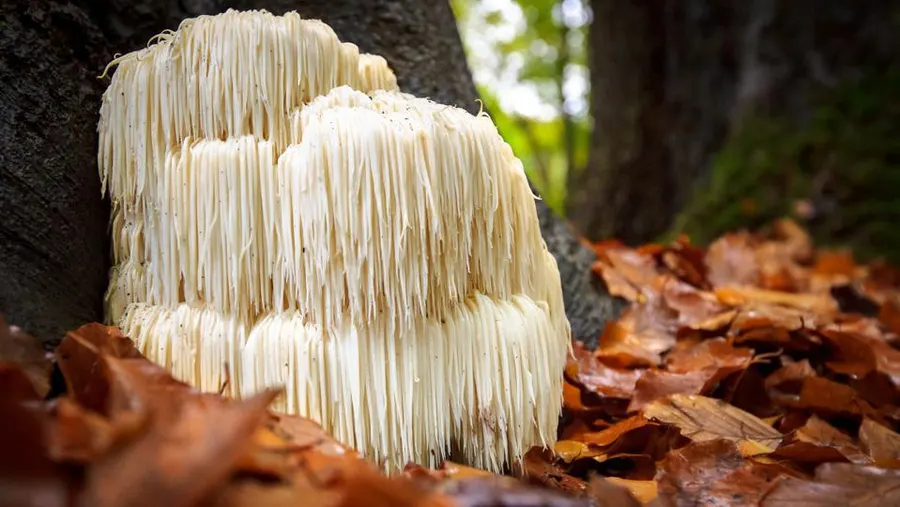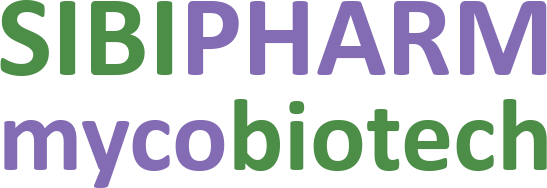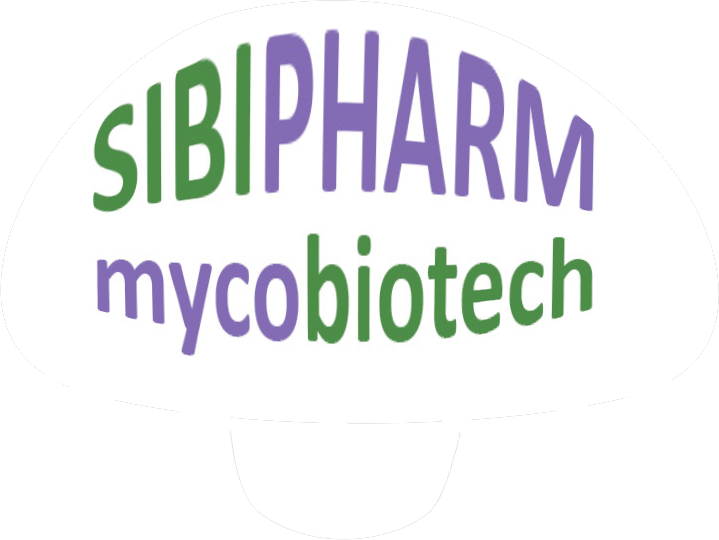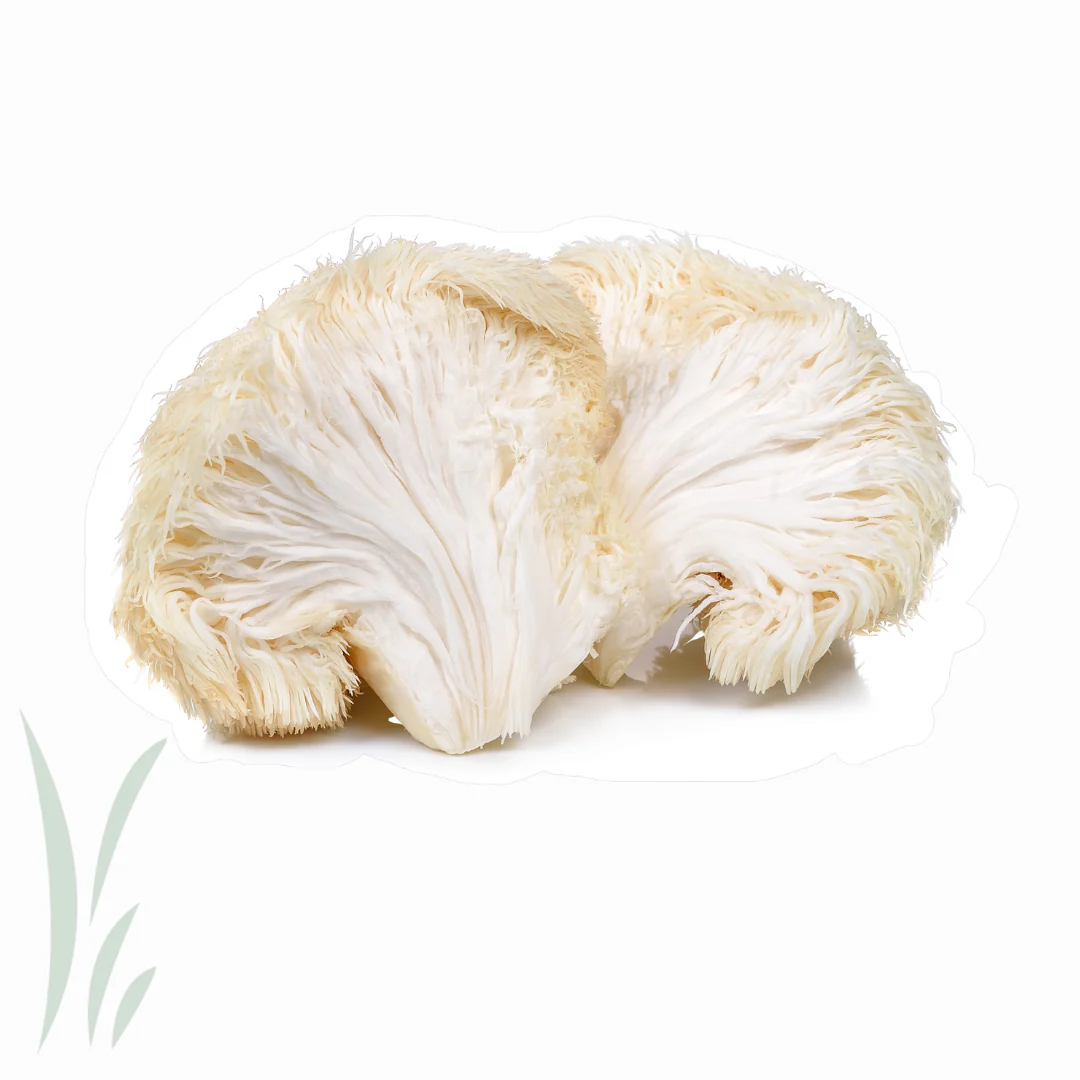Latin name: Hericium erinaceus
The main areas of application of Lion’s Mane:
- Improving cognitive function.
- Protecting the nervous system.
- Treating depression and anxiety.
- Supporting intestinal health.
- Antioxidant protection.
- Recovery from neurotrauma.
- Improving immune function.
- Supporting heart health.
- Prevention of Alzheimer’s disease.
- Improving memory and concentration.
Description of the Lion’s Mane mushroom:
The Lion’s Mane (Hericium erinaceus), is a mushroom that has an unusual appearance, resembling long white threads or a lion’s mane. This mushroom belongs to the genus Hericium and is commonly found in the Northern Hemisphere, including countries in Europe, North America, and East Asia. The Lion’s Mane prefers to grow on dead or weakened wood, most often oak, beech, and other deciduous trees. The growing season begins in the summer and continues until late autumn. Its fruiting body can reach a diameter of 20-40 cm, and weigh up to 1.5 kg. The color of the mushroom varies from bright white to yellowish-cream as it ages. In the wild, the mushroom can be found in temperate forests, but it is also cultivated in artificial conditions for medicinal and food purposes.

History of Lion’s Mane Medicinal Uses:
Lion’s Mane has been used in Traditional Chinese Medicine (TCM) for centuries, where it was called the “sage’s mushroom” for its effects on mental clarity and longevity. It was first mentioned in ancient medical texts, where it was prescribed to treat stomach ailments, improve digestion, and support overall health. In Japanese medicine, the mushroom was also widely used to support gastrointestinal health and boost the immune system. In recent decades, Western medicine has turned its attention to the medicinal properties of this mushroom, in particular due to research showing its benefits for the nervous system and cognitive function. In the modern world, Lion’s Mane has become popular among biohackers and health enthusiasts for its ability to slow down the aging process of the brain and improve memory. In the 20th century, Japanese and Chinese scientists began to actively study the active components of the mushroom, discovering its anti-inflammatory and neurogenesis properties. Since then, extracts of this mushroom have been used to prevent and treat neurodegenerative diseases such as Alzheimer’s and Parkinson’s.
Active ingredients in Lion’s Mane mushroom:
The main bioactive components of Lion’s Mane are hericenones and erinacines. These substances are triterpenoids that stimulate the synthesis of nerve growth factor (NGF), which plays a key role in the support and regeneration of neurons. Studies have shown that hericenones (found in the fruiting body of the mushroom) and erinacines (contained in the mycelium) have the ability to pass through the blood-brain barrier, thereby having a direct effect on brain activity.
In addition to hericenones and erinacines, the mushroom contains beta-glucans – polysaccharides with powerful immunomodulatory properties. These substances stimulate the activity of macrophages and natural killer cells, which makes Lion’s Mane an important component in the fight against infections and for maintaining the immune system. Other active compounds include phenolic compounds such as protocatechuic acid and hydroxybenzoic acid, which have antioxidant activity and help protect brain cells from oxidative stress and inflammation.
The adenosine present in the mushroom has a calming and anti-anxiety effect. This makes it useful for people suffering from chronic stress, anxiety disorders, and sleep disorders.
The mushroom also contains various amino acids, including glutamine, which is important for normal brain function, and vitamin B12, which is necessary for maintaining cognitive function.
The flavonoids and terpenoids contained in Lion’s Mane help improve blood circulation, reduce inflammation, and protect against age-related changes in the brain. Their synergistic action with other components enhances the protective properties of the mushroom.
Therapeutic effect for a biohacker:
For biohackers looking to improve their cognitive abilities, Lion’s Mane is an invaluable tool. One of the key medicinal effects of the mushroom is to stimulate the synthesis of NGF, which promotes the growth and restoration of neurons. This is especially useful for people engaged in active mental activities or recovering from stress that affects cognitive function. Studies show that regular consumption of Lion’s Mane can improve memory, speed of information processing and concentration.
Another important aspect is antioxidant protection. The active components of the mushroom help reduce oxidative stress, which is one of the causes of aging of brain cells. This makes Lion’s Mane an effective remedy for slowing down cognitive impairment caused by aging.
Lion’s Mane helps reduce inflammation in the body, especially in the nervous system, due to its anti-inflammatory properties. This is important for biohackers seeking to prevent chronic diseases and maintain a high level of physical and mental activity.
Consuming Lion’s Mane improves the quality of sleep due to its calming effect and the ability to normalize the level of cortisol, which is the main stress hormone. This is especially important for people suffering from fatigue and chronic lack of sleep.
For biohackers interested in supporting the immune system, Lion’s Mane also has a significant effect. Beta-glucans contained in the mushroom stimulate the activity of killer cells, strengthening the body’s natural defenses against pathogens.
The neuroprotective properties of Lion’s Mane make it useful for the prevention and treatment of neurodegenerative diseases. Experimental studies have shown that mushroom extract can slow the progression of diseases such as Alzheimer’s and Parkinson’s, which is essential for maintaining a healthy lifestyle and high cognitive function in old age.
The mushroom also improves mood, helping to combat depression and anxiety disorders. This is due to its effect on the levels of serotonin and dopamine – neurotransmitters that play a key role in regulating mood and emotional state.
Disclaimer:
The information provided in this article is for educational and informational purposes only. It is not intended as a substitute for professional medical advice, diagnosis, or treatment. Never disregard professional medical opinion and consult with a specialist.
Scientific articles:
- Therapeutic Potential of Hericium erinaceus for Depressive Disorder.
Chong PS, Fung ML, Wong KH, Lim LW.
https://pubmed.ncbi.nlm.nih.gov/31881712/
- Neurotrophic and Neuroprotective Effects of Hericium erinaceus.
Szućko-Kociuba I, Trzeciak-Ryczek A, Kupnicka P, Chlubek D.
https://pubmed.ncbi.nlm.nih.gov/37958943/
- Improvement of cognitive functions by oral intake of Hericium erinaceus.
Saitsu Y, Nishide A, Kikushima K, Shimizu K, Ohnuki K.
https://pubmed.ncbi.nlm.nih.gov/31413233/
- Hericium erinaceus, a medicinal fungus with a centuries-old history: Evidence in gastrointestinal diseases.
Gravina AG, Pellegrino R, Auletta S, Palladino G, Brandimarte G, D’Onofrio R, Arboretto G, Imperio G, Ventura A, Cipullo M, Romano M, Federico A.
https://pubmed.ncbi.nlm.nih.gov/37346156/
- Reduction of depression and anxiety by 4 weeks Hericium erinaceus intake.
Nagano M, Shimizu K, Kondo R, Hayashi C, Sato D, Kitagawa K, Ohnuki K.






